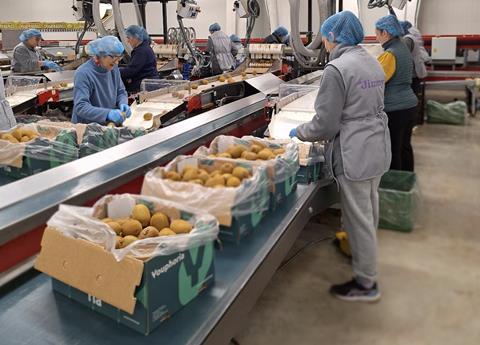Grower expectations for higher prices are putting pressure on Greek kiwifruit exporters ahead of the new season, as Greek volumes continue to grow as the European market slows

With the Greek kiwifruit harvest officially starting on 15 October, exporters are already sounding a note of caution. Frosty conditions during the spring ensured Greek stonefruit suppliers experienced an especially challenging season in 2025, not least the country’s cherry growers, whose crops were decimated almost as summarily as in neighbouring Turkey.
“For cherries, we had a terrible season,” says George Kallitsis of Youphoria Fruits. “And now for kiwifruit it is looking like being another challenging season.”
Kiwifruit growers are demanding even higher prices than last year, according to Kallitsis. “Growers in Greece have high expectations,” he says. “They made good money last year, but a lot of packers didn’t make any at all, as the fruit didn’t hold up so well in storage.”
This season, growers have been encouraged by the frost damage, which has reduced volumes in certain areas. But the volume being grown across the country is going up all the time, says Kallitsis.
“This year, production will be around 350,000 tonnes, so higher than last year,” he says. “The size of the fruit is a bit smaller than last year, but the weather has been favourable over the summer, so the quality looks good. Greece mainly produces green kiwifruit. Yellow is grown here and there, but it is developing very slowly in Greece.”
Many Greek producers are switching from production of fruits like peaches and grapes to kiwifruit. “There is good demand for kiwifruit at the moment, so the price expectations are high,” says Kallitsis. “But this demand is only temporary. Europe is a slow market for kiwifruit, especially until around February.”
As a result, the US has developed into an important market for Greek kiwifruit, but exchange rate changes have added costs. “Due to the value of the US dollar,” says Kallitsis, “the total cost when sending to the US is now around 10-15 per cent higher.”



